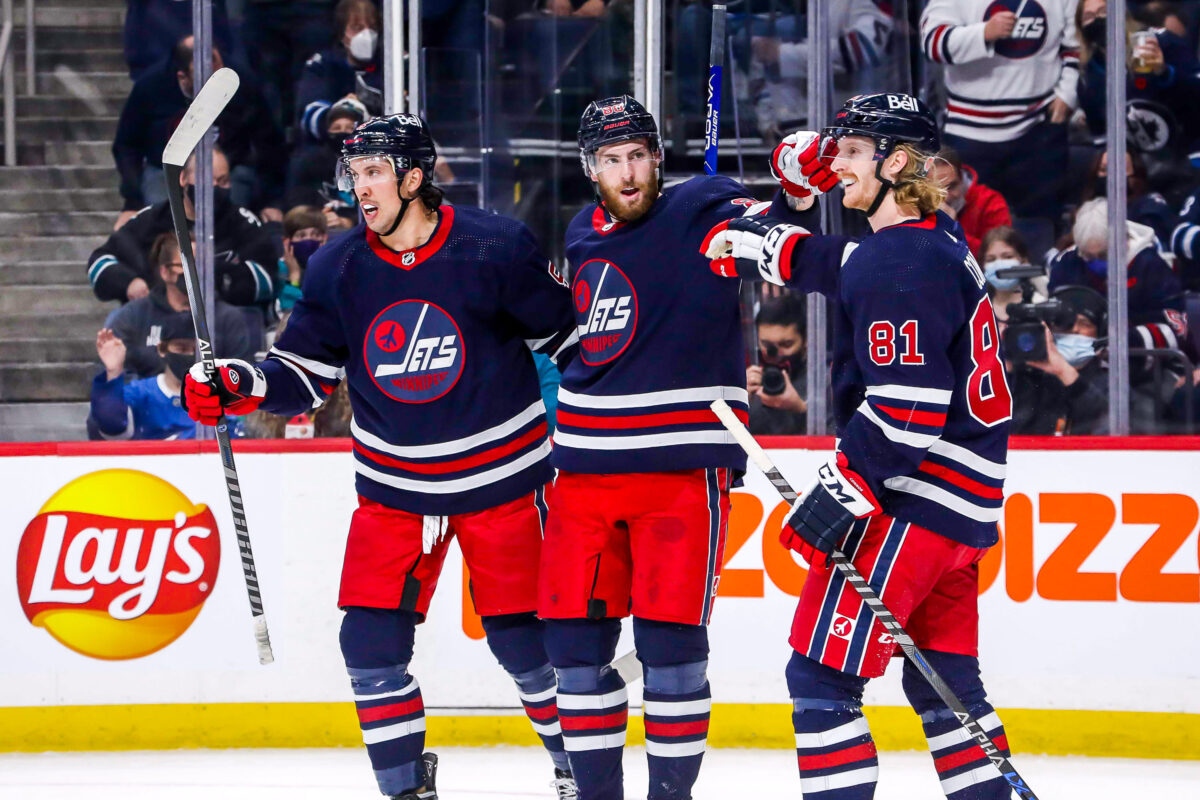Kyle Connor’s goal-scoring prowess is unparalleled, particularly in the critical zone from the top of the circles towards the net. This is not a coincidence; his goal-scoring approach is characterized by keen awareness, lightning-fast hand movements, and the ability to adapt to defensive challenges instantaneously. When a clear path arises, Connor swiftly seizes the opportunity, and if a defenseman leans one way, he adeptly shifts the other.
When a goaltender, like Jordan Binnington, finds himself in a dilemma, split between thoughts and gearing up to thwart Mark Scheifele’s backdoor pass, Connor seizes the opportunity to go for the upper corner, near side.

The Winnipeg Jets are currently in Michigan, gearing up for a match against the Detroit Red Wings. In the arena where Connor has proven lethal, he has netted four goals and provided two assists, accumulating six points in his last four visits. Remarkably, he hasn’t been held without a point since the 2017-18 season.
Therefore, all eyes will be fixed on Connor, alongside fellow Michigan native Connor Hellebuyck, as the Jets strive to attain a winning record for the first time this season. I aim to focus closely on his recent goal against Binnington by utilizing the NHL’s Edge stats toolkit. This is in order to emphasize that the wealth of data at our disposal underscores the increased significance of visual analysis, commonly known as the “eye test.”
Some Experts Still Do Not Consider Him an Elite Shooter
First, let’s explain how he scored his winning goal in Tuesday’s game. Nate Schmidt plays a pivotal role by initiating a turnover from a faceoff in the St. Louis Blues’ zone. He successfully delivers the puck to Connor, catching the Blues off guard and allowing Connor to showcase his offensive brilliance. At this moment, Connor faces the challenge of evading the sliding Colton Parayko while also having Scheifele as an open option for an easy backdoor tap-in. With composure, Connor maintains control of the puck and executes a precise top-shelf wrist shot from the faceoff dot to Binnington’s right.
Connor’s performance ultimately secured the game-winning goal, and we can analyze this achievement from various perspectives. While Evolving-Hockey’s computation is intricate, the three most significant contributing factors are the shot distance measuring 25.5 feet, the shot angle at 48.2 degrees, and the time elapsed since the last tracked event. All of these aspects hold importance. According to Evolving-Hockey, the expected goal value for that shot stands at 6.7 percent. Meanwhile, NHL Edge’s shooting location map suggests a 9 percent likelihood of that shot finding the back of the net.

Imagine if I were to inform you that Connor’s typical shot velocity of 32.6 miles per hour falls below the NHL player average. Furthermore, according to NHL Edge, it’s worth noting that Connor did not score a single goal from beyond the top of the circles in the previous season, nor in the season before that.
Related: Jets’ Patience with Cole Perfetti the Key to His Success
Latest THW Headlines
However, from the beginning of the 2021-22 season up to the present, he has netted 82 goals in 167 games, ranking him 12th in the NHL for goal-scoring. Remarkably, he achieves this with a shot speed that’s considered below average, consistently outmaneuvering goalies without relying on long-range shots. In total, he scored 213 goals in 417 matches. I think his numbers will soon convince some experts otherwise.
His Role Is Essential for Success
Connor is quite active in terms of shooting, scoring, and the time he spends in the offensive zone compared to other forwards. Despite his below-average top skating speed, a brief six-game sample suggests that this might be more related to the circumstances than his actual ability. Similarly, his top shot speed is below the norm, as evidenced by previous seasons’ data. This might be a matter of skill or perhaps reflects his choice of shots. It’s important to note that Connor tends to shoot more frequently (and score more often) from the low slot, indicating that he doesn’t rely on blasting 100 MPH one-timers from close range.
This leads us back to the significance of personal observation. To truly grasp Connor’s offensive prowess, one must witness it firsthand. The NHL Edge system can only provide valuable insights when we align its data with what we observe on the ice. Even metrics like zone time should not be unquestioningly trusted since some players might cycle the puck along the boards without creating genuine scoring opportunities. While basic metrics such as shots and expected goals remain valuable, a holistic approach is necessary.
